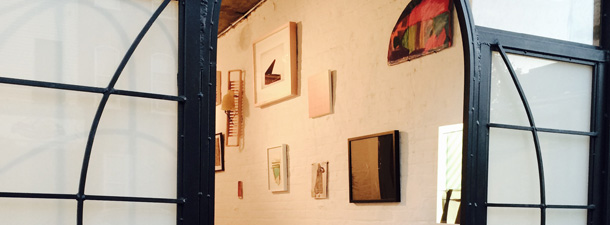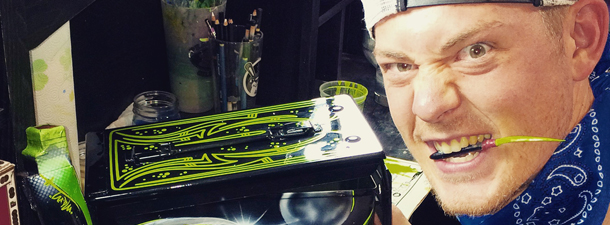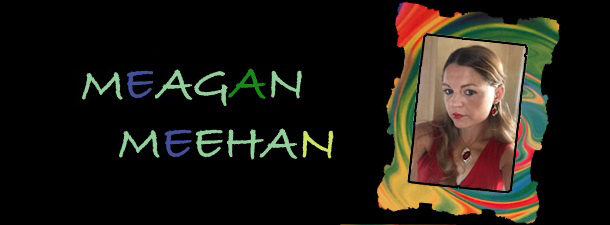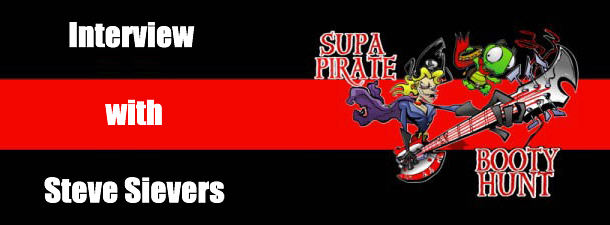Illustration, art, and more: Interview with Cristian S. Aluas
Cristian S. Aluas is a Romanian-born fine artist who currently resides between the United States and Canada. Cristian works in a variety of mediums including graphic design, illustration, sculpture, comics, and film. A producer, public speaker, and teacher, Cristian runs a series of successful online classes where he teaches artwork and even custom-makes classes depending on the needs of specific students. In 1996, when he was still in high school, he self-published his first graphic novel. After attending college, he found work in animation and television on children’s shows such as “Franklin the Turtle.”
Cristian currently works full-time as a freelance artist and teacher. His huge murals are displayed publicly and his work has been seen in The National Gallery of Canada and New York’s Museum of Modern Art (MoMA). His live-action short film titled “Big Boss: Night Out”–which is based on his “Big Boss” graphic novel–debuted at the Chain Film Festival in NYC. Moreover, his daily comic series can be read, free of charge, on Instagram via @bigbosscomic.
In an exclusive recent interview, Cristian discussed his career and experiences in the creative arts.
Meagan Meehan (MM) of Entertainment Vine: How did you initially get interested in the arts and when did you discover your talent for drawing?


MM: You published your first graphic novel when you were still in high school. So, what was it about and what gave you the idea for it?
CSA: I was attending a magnet high school for the arts, Canterbury, and was in my second to last year of high school when I had the desire to publish my own comics. I talked a friend of mine to do one short five-page story each and he and I put our stories together in a short zine. Our teacher snuck us into the teacher’s lounge and made fifty copies for our use, on the school copier. We made a small profit, for cigarettes and coffee, as we sold each copy to our friends for $1 each. My story was about my “Big Boss” character, which I had been drawing for years before then, and he somehow found himself in Hell, face to face with Lucifer. I had two more chapters left to the comic but my friend was lax and he never completed his story. Time passed and I was in my last year of high school and I decided to finish the three-part storyline on my own, which was about Big Boss’ lament in Hell and his attempted escape only to fail in beating the devil (an allegory to my teenage angst). By then, I was living on my own at eighteen. I saved my money from working at a fast food restaurant and I managed to afford to print sixty copies. I worked a deal with a printer to make the copies myself and staple them, to save a few bucks. I then took the bus and walked around to comic shops in Ottawa and sold my comic (called “Dark: Special #1”) for 40-60% of the $2 cover price. And that was my first adult passion, merging art and business.
MM: What is your daily comic like and what inspires the continuous storylines?


MM: How did you get into animation and what sorts of shows did you work on? Did you have any particular favorite television and/or media projects?
CSA: It was after high school and I feared that I might be stuck working at Harvey’s (a fast food restaurant in Canada). I did not want to become a “lifer” (meaning, work there for life) so I applied to College. My first choice was Graphic Design, mostly because I liked the sound of being called a “Graphic Designer.”
I found a good program at Algonquin College and applied to it. I had a friend though that was enlisted in a Pre-Animation program that was helping him strengthen his portfolio to be admitted into the Animation-Television program at Algonquin. I was doing a lot of reading and writing around that time and was very artsy so he invited me to drop into his Life Drawing class. I met the teacher and I believe that she let me do a couple of drawings. She also introduced herself and told me that she was trained classically in England. That impressed me. There was a voice inside me that told me that, much like Picasso, I must master classical drawing, before exploring other styles and so I applied to the Animation-Television program, just for the Life Drawing classes. I got an acceptance letter for Graphic Design as well and it was hard to choose but I went with Animation.
I met some fun people. Everybody in that industry is a big kid. They collect toys and play video games, watch cartoons. My work was strong enough right after graduating that I got work immediately (was even interviewed my Disney Studios in Toronto, while still in school). I worked on “Franklin the Turtle,” briefly on a feature called “Les Triplettes des Belleville,” and on “Ripping Friends,” with controversial creator John Kricfaluci (of “Ren and Stimpy” fame). While I was working, I continued my education at Concordia University in Montreal, having been accepted into the “Creative Writing” program. I added a minor in “Studio Art and Art History.”
After a couple of years, I came back to Ottawa and decided to become an “Artist,” in the grandest definition of the term, as I imagined it. I immediately registered a small publishing company and was also printing books with my art, poetry books, coffee-table books, and children’s books. The great thing about animation was that I took screenwriting classes, drama classes, and learned storyboarding and directing. This has come in handy, as I now have an even greater interest in live-action filmmaking. Although I now do some animation work for clients, when I was in school, animation was always secondary to me. I loved the Life drawing most and valued the friendships and overall training next.
MM: You owned an art school for a while and now teach art classes online, so what do you most enjoy about teaching and the ability to customize classes?


MM: Do you prefer teaching online or in person more and what was the process of getting your teaching website off the ground like?
CSA: I prefer teaching in person, to be honest. I love the interaction. I used to design HTML sites, early in my career, so putting together the site and the SEO was easy. I only advertise for free. I hardly advertise, to be honest. Especially now. When I started the site up again in Las Vegas, I posted on Craigslist and Yelp and got private students that way. I find that once people talk to me, they realize quickly how much experience I have and we hit it off. Now, the site is just a link to my online courses. Hopefully, I will record some more courses soon. Trying to think of useful topics that are also easy to produce videos of.
MM: You now work as a freelance illustrator, so what sorts of projects have you worked on with other people? For instance, do you do comics for all ages such as children’s picture books to more serious and adult-geared graphic novels?
CSA: I’ve been working as a freelance illustrator for over fifteen years professionally, and for over twenty-five years, if you count my sporadic commissions from public school and high school. I get most of my projects online. Some in person. I have done everything. Really. I’ve drawn tons of kid’s books and mature comics. Too many to mention. Having a strong foundation in life drawing, from college, I am great at mimicking styles of art so if a client just shows me what style they like, I can replicate it. That has made it easy for me to get lots of work over the years. As for personal projects that I initiated, I drew a children’s book with a poet, back when I had my publishing company. I published and made a limited number of copies. I also drew and designed my graphic novel “Big Boss: Gun For Hire.” I had a writer that I worked with for that and I outsourced some of the art and all the coloring and lettering. I have illustrated children’s books and novels for several clients, some of which are on Amazon.
MM: You’re also a commercial artist, so which companies have you worked with?
CSA: Nobody like Nike or Coca Cola. My specialty has been small and medium businesses. I’ve worked with some corporations, doing illustrative branding for them.
MM: You are also a sculptor, so what draws you to your abstract style and what is the process of creating your pieces like?
CSA: My sculptures are not cast; they are fabrications. I have actually even designed a diamond ring. The way I work is: I design on paper and I hire a fabricator to make my design. Designing the diamond ring was a great process. It was amazing researching diamonds and gold and other gems, to incorporate into the design. The freestanding pieces that I designed for my last solo show were done similarly. I touched up some of the pieces before they went up but mostly the fabricator built them and did a great job. They are very impressive and I had a beautiful reception.
MM: How did you go about getting your work seen in major museums like MoMA?


MM: You’re also a movie maker, so what has that experience been like?
CSA: I’ve got the film bug. I have made some art films over the years, which you can find on YouTube. Basically, in early 2015, I was watching a movie and I had the idea to turn a short story that I drew in my Big Boss graphic novel into a short film. I collaborated with a writer and we co-wrote what ended up being a ten-minute live action film. It stars Stephen Brodie (a moderately known actor but very effective in the role). I hired a director in Vegas, for the film, and I focused on producing. But this past Summer, I directed a short plot-driven film myself. Earlier in the year, I realized my love for film, since my time in Yugoslavia as a youth, watching films, and it occurred to me that I had been trained through animation, storyboarding, screenwriting, play-writing, and visualization as a fine artist, to makes films professionally. It’s my new love and I am in the process of transitioning to it fully.
MM: You are available for public speaking, so what topics can people expect to hear you talk about?
CSA: Yes. I do it all, it seems. Over the years, I have spoken on the “Business of Art,” comic book publishing, independent filmmaking, set design (as I designed a couple of set pieces for a play and a ballet), the creative process, and my freelancing experiences. I enjoy it. I love sharing my ideas and experiences. I’m in love with life and I love the opportunity to come out of my creative cocoon and share my knowledge and passion with like-minded individuals.
MM: So far, what is the most rewarding thing about being an artist and what are your career goals over the next ten years?
CSA: Right now, as always, it’s the learning. I love learning and challenging myself. This year, for instance, I set out to get back into writing and now I have two writing projects for clients and couple of projects for myself. I’m choosing my own adventure! Life is remarkable for that. My ten-year plan is to make the most of my life in New York. I’d like to write and direct a few to several feature films and publish at least one book and several plays and screenplays. And I’m open to fine art opportunities as well, as, at my core, I see myself as a visionary. I know, it sounds grand.
MM: Is there anything else that you want to discuss or mention?
CSA: Well, definitely, please read my Instagram comic @bigbosscomic and support me on Patreon.com/bigbosscomic
Right now, I draw the comic daily, between my freelancing jobs and my writing projects (this comic being one of them). If I can focus on the comic, the writing, and the producing and directing, I’ll be in a perfect world, and the more support that I have to create what I do best, the more I can impress you, the audience. As an artist, I see my role as sharing my experiences through fiction, to improve the lives and inspire the thoughts of others. It is my calling; I have a great deal to offer.
* * * * *
To learn more about Cristian, visit his official website, Twitter, LinkedIn, YouTube, and Udemy.





Excellent read!